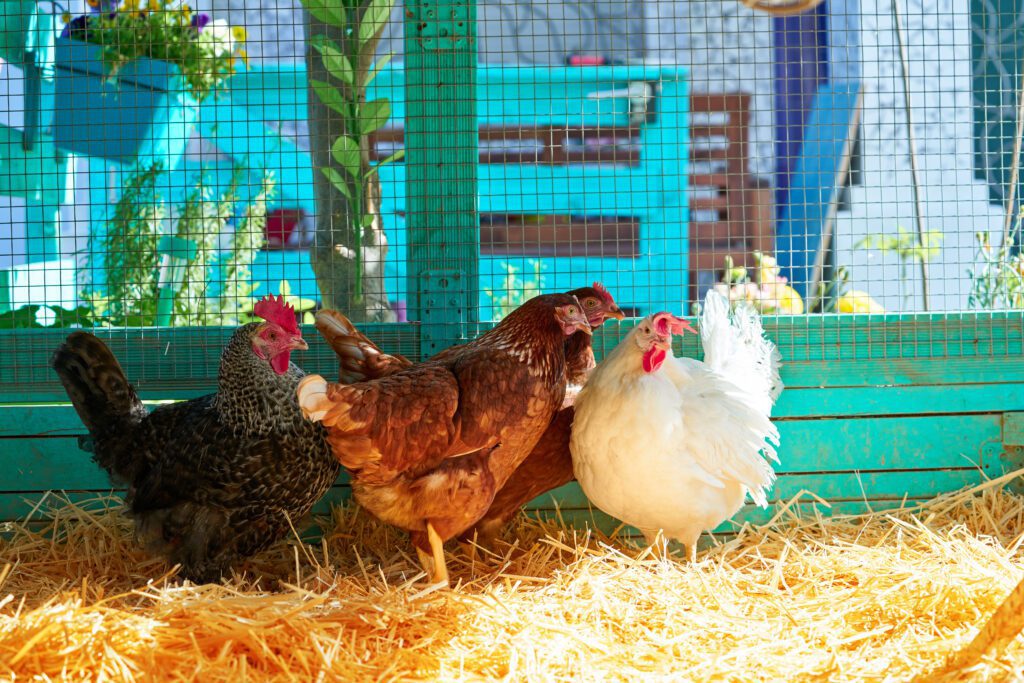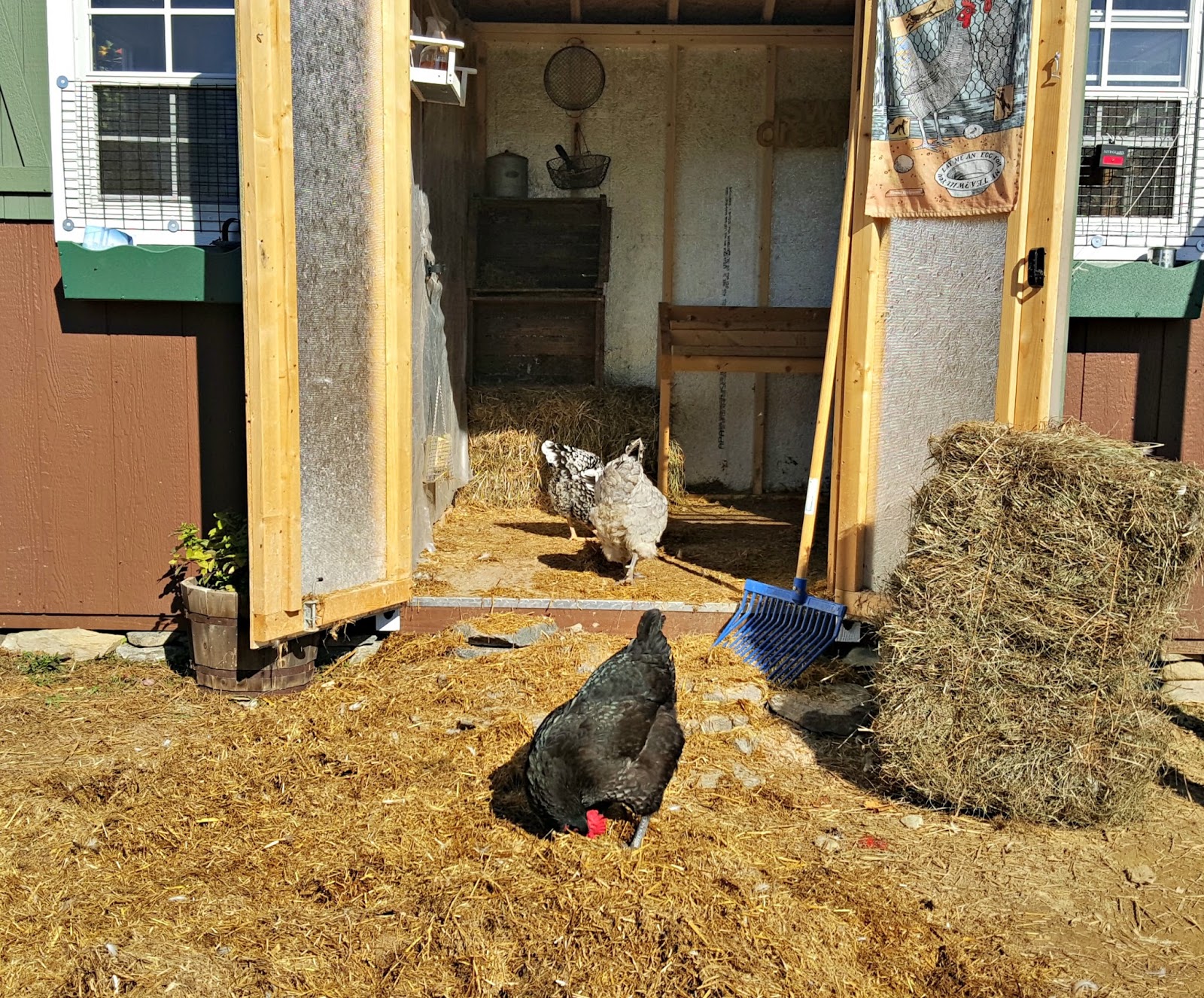Call us at 725-239-9966!
M-F: 8 AM-7 PM PST
Call us at 725-239-9966!
M-F: 8 AM-7 PM PST

Keeping chickens healthy starts with lining their chicken coop and run properly. But with so many bedding options, which works best?
After extensive research, pine wood shavings stand out as the overall best bedding for backyard chickens. Of course, other quality bedding alternatives exist too.
But which bedding option is the best one for your chicken? Don't worry. We’ll cover everything you need to know about selecting the best chicken coop bedding.
Chopped straw makes an inexpensive, insulating bedding chickens enjoy scratching and dust bathing in. But it has low absorbency and may contain mold.
Pine shavings are soft, absorbent, and deter odors, but can be dusty and unsustainable if not locally sourced.
Sand offers easy cleaning and dust bathing spots, yet requires good drainage to avoid moisture buildup.
Chopped leaves give chickens scratching enrichment, though absorbency is low and leaves can mat down.
Hemp bedding has excellent absorbency and composts well, but is more expensive and not widely available.

Let’s discuss the pros and cons of 5 of the best bedding options for chicken coops:
Straw makes a cheap, loosely packed bedding that chickens enjoy scratching and dust bathing in. It also insulates well against cold.
Pros of Chopped Straw Bedding:
Cons of Using Chopped Straw:
How to Source and Use Straw:
Pine shavings make a soft, absorbent bedding. They're inexpensive, readily available, and compost well. But avoid shavings from cedar, black walnut, or redwood.
Benefits of Pine Shavings for Chicken Coops:
Drawbacks of Pine Shavings:
Finding and Using Pine Shavings:
Coarse builder's sand makes an excellent litter for coops with outdoor access. It drains well, cleans easily, and provides a dry dust bathing spot. Avoid play sand, which is dusty.
Why Sand is Good for Chicken Coops:
Potential Downsides of Sand Bedding:
Choosing and Maintaining Sand Bedding:
Chopped leaves make an affordable and compostable bedding. They provide great scratching material and enrich pecking time. Avoid using whole leaves, which mat down.
Advantages of Using Chopped Leaves:
Disadvantages of Leaf Litter:
Collecting and Maintaining Leaf Litter:
Hemp bedding is highly absorbent, compostable, and made from the fibers inside hemp stalks. It's gaining popularity for its odor-controlling abilities and sustainability.
Pros of Hemp Bedding:
Cons of Hemp Bedding:
Sourcing and Caring for Hemp Bedding:

So what makes an ideal chicken bedding? Here are the most important factors to consider:
Absorbency is vital for controlling moisture and odors in the coop. Pay attention to how well bedding soaks up liquid.
Here is how the various bedding materials compare in terms of absorbency:
| Bedding Material | Absorbency Rating |
|---|---|
| Hemp bedding | Excellent |
| Pine shavings | Very good |
| Chopped straw | Fair |
| Sand | Poor |
| Whole leaves | Poor |
Along with absorbency, the bedding must help control smells. Some materials like hemp naturally deter odors.
Others like cedar shavings contain natural oils that help mask foul odors. Avoid scented bedding, as this may irritate your chickens.
Good insulation helps regulate temperatures inside the coop. This is especially important in cold climates.
Fluffy, porous materials like pine shavings and straw trap air well for insulation. Stay away from smooth or dense beddings.
Bedding for a big chicken house gets expensive over time. Opt for budget-friendly bulk options like wood shavings, straw, or sand.
| Bedding Material | Estimated Cost |
|---|---|
| Straw | $3-10 per bale |
| Pine shavings | $10 per cubic ft |
| Sand | $1-2 per cubic ft |
| Chopped leaves | Free if self-collected |
| Hemp bedding | $10 per cubic ft |
Dusty bedding can irritate your chickens' eyes, nose and throat. It may even cause respiratory issues over time.
Avoid beddings that generate excessive dust like sawdust and finely ground straw. Also, stay away from molds and mildew.
Consider how readily available and sustainable the bedding is in your area before choosing. For instance, pine shavings may be plentiful if you live near lumber mills.
Long-term, it helps to have multiple bedding sources in case one falls through.
Of course, bedding is just one element of setting up the ideal home for your chickens. When choosing or building your coop, pay close attention to factors like space per bird, ventilation, roosts, and nesting boxes. The best chicken coop optimized for your flock's needs will make it easier to keep their bedding clean and dry.

Proper coop bedding is vital for keeping backyard chicken coop clean, comfortable, and healthy for your flock. With so many options available, focus on absorbency, odor control, insulation, cost, dust levels, and sustainability when selecting bedding.
Try out a few different beddings on a small scale first before committing to buying a year's supply. Over time, you'll discover what works best for your chickens and maintenance style.
By providing the right litter for your coop, you'll give your flock a safe and enriched home where they can happily scratch, peck, dust bathe, and nest. Your chickens will thank you!
The frequency of changing the bedding in the chicken coop depends on the type of bedding used, the size of your coop, and the number of chickens. As a general rule, bedding should be changed anytime it becomes soaked with waste or starts to smell.
While kitty litter can be used in a chicken coop, it's not a common choice. Kitty litter comes in clumping and non-clumping forms. The clumping form should not be used in the coop because the chickens might eat it, which could cause an intestinal blockage. Non-clumping kitty litter can be used to control odors, but it is not as effective at absorbing waste as other options.
The deep litter method is a method of chicken waste management where litter in the chicken coop is allowed to build up over time. It is turned regularly to promote composting of the waste and fresh bedding is added on top. This method not only minimizes the work of cleaning out the coop but also helps to insulate it in winter.
Features to consider when choosing your bedding type include its ability to absorb waste, dust level, ease of cleaning, cost, and whether it can be used with the deep litter method. Also, bear in mind the climate conditions in your area, the size of your coop, and whether your chickens spend more time in the coop or the run.
Definitely. For example, sand can cause an impacted crop if chickens ingest too much, cedar shavings can cause respiratory issues due to their strong smell, and straw can harbor mites. It's essential to research all bedding options and any associated risks before making a choice.
Yes, it does. Bedding does not only affect the coop but also the run. Sand is an especially good option for runs because it drains well and helps to control odor. Other options like wood shavings or straw and hay may not be suitable for runs as they can cause a muddy mess or become slippery when wet. So use sand.

{"one"=>"Select 2 or 3 items to compare", "other"=>"{{ count }} of 3 items selected"}
Leave a comment